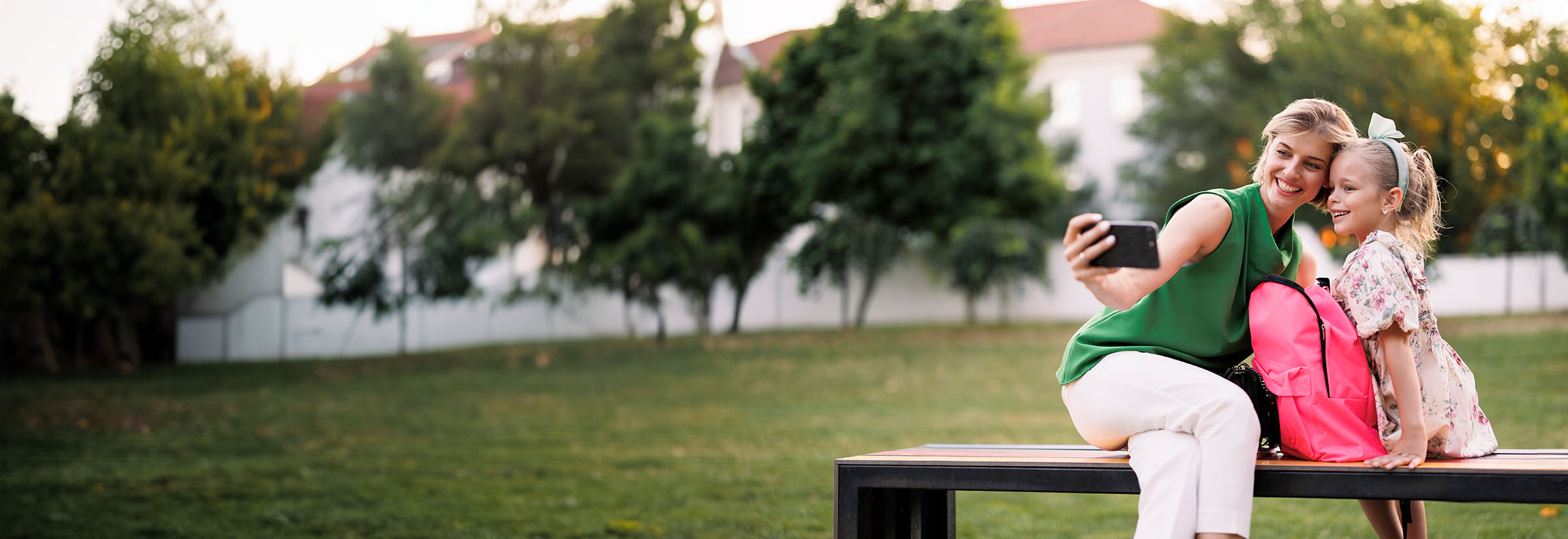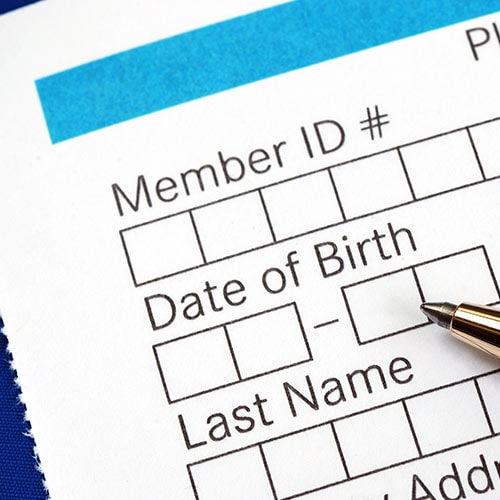Many parents snap cute back-to-school photos as a way to celebrate the start of a new year and mark the passage of time. But the seemingly innocent ritual of posting these images on social media can cause big problems for kids.
By sharing these sweet photos online, you may inadvertently divulge sensitive information, making your children potential targets for identity theft, "digital kidnapping," or privacy violations. And these posts can even reveal details about your kids' daily routines, putting them at risk physically as well.
But you can still have fun taking and sharing back-to-school photos digitally, as long as you take online safety precautions. Here are seven practical tips for parents on how to celebrate educational milestones without compromising your child's privacy or security.
1. Think twice before posting back-to-school pics on social media.
Many parents stage back-to-school photos with cute signs and props made just for social media. But it's safest to resist the temptation to post these pictures on Instagram, Facebook, and other social platforms.
Posting on social media can make it easy for others to copy or share your photos widely. Some parents who have posted photos of their kids online have even discovered strangers swiping these photos and claiming the kids as their own, a practice known as "digital kidnapping."
2. Hide identifying details in your photos.
Photos can inadvertently reveal personal information a stranger or acquaintance could use to prey on a child. For example, photos may show the address of your home, the exact spot where your kids catch the school bus, or the local park where they play.
If you do post back-to-school photos on social media, consider first blurring the background or redacting personal details to avoid revealing too much information. Some privacy conscious parents even hide their kids' faces by blurring them or covering them with an emoji.
3. Avoid sharing personal details with back-to-school photos.
It's not just the photos that can be too revealing; it's the text you post along with them. For many parents, the start of a new school year prompts reflection, but it's important to avoid sharing too many details in a social media post.
If you do write about the milestone, keep the content to your own feelings and reflections, and avoid sharing details like dates of birth and pets' names that could put your kid at risk for ID theft or even allow a hacker to guess a password. To protect your kids even further, make sure they use strong passwords that don't contain their personal information.
4. Know that hidden information can be stored in a photo.
Your photos contain a wealth of information beyond what's visible just in the photo. In fact, the Exchangeable Image File Format or "Exif" data stored in a digital photo may reveal information that can compromise digital privacy.
For example, Consumer Reports found a photo of a boy playing baseball on Flickr, the photo sharing site. By looking at the Exif data, they were able to see the exact date and time of the photo and that the game took place on a small dirt baseball diamond behind a church in a small town in Ohio.
Some social media sites strip Exif metadata on shared photos, but they may keep and use the data themselves for their own purposes. You can check the metadata contained in a photo using features on your computer or phone, and there are apps available that allow you to strip this data from photos before sharing them online.
5. Check your privacy and sharing settings on social media.
If you plan to share back-to-school photos on social media despite the privacy risks, double check your privacy settings and audience before you post. Social media privacy settings options change frequently, but here's a guide to Facebook privacy settings. You can tweak these to control who can see and share what you post, and Facebook also offers a "Privacy Checkup" to walk you through a check of your settings. And here's a guide to Instagram privacy settings that allow you to make your account private.
Keep in mind that a friend, relative or neighbor might innocently share photos of your kids, making them visible to all their friends or followers who may also share, and so on.
6. Get consent before posting pictures.
Sharing photos of your kids is known as "sharenting," and their feelings about having their photos shared might change as they get older. It's a good idea to ask your kids for their permission before sharing any photos of them, and to respect their wishes about sharing. If you took back-to-school photos of your kids with their friends, avoid posting these without express permission from the parents and the children.
And have conversations with anyone you share your kids' photos with to make sure they understand your family rules about sharing kid photos. Remember, Grandma or Grandpa might have different views and different privacy settings, so talking before you provide access to photos may help you avoid privacy problems and family rifts.
7. Consider sharing photos in other ways.
There are plenty of ways to share photos with close family and friends without posting on social media. You can mark the occasion and by sharing these photos with trusted family and friends through more secure platforms.
For example, you can use instant messaging apps, cloud storage services, and other more private ways to share photos with trusted family and friends. Here's a guide to privately sharing photos with loved ones.
The back-to-school season is a time of new beginnings and learning, so grab the opportunity to brush up on your knowledge of cybersecurity risks, and to find safer ways to mark the start of a new school year for you and your family.
Editor’s note: Our articles provide educational information. LifeLock offerings may not cover or protect against every type of crime, fraud, or threat we write about.
This article contains
- 1. Think twice before posting back-to-school pics on social media.
- 2. Hide identifying details in your photos.
- 3. Avoid sharing personal details with back-to-school photos.
- 4. Know that hidden information can be stored in a photo.
- 5. Check your privacy and sharing settings on social media.
- 6. Get consent before posting pictures.
- 7. Consider sharing photos in other ways.
Start your protection,
enroll in minutes.
Copyright © 2025 Gen Digital Inc. All rights reserved. All trademarks, service marks, and tradenames (collectively, the "Marks") are trademarks or registered trademarks of Gen Digital Inc. or its affiliates ("Gen") or other respective owners that have granted Gen the right to use such Marks. For a list of Gen Marks please see GenDigital.com/trademarks.




